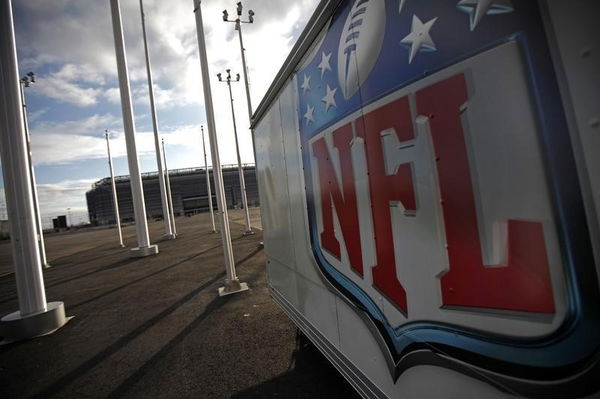
via Imago
The NFL logo

via Imago
The NFL logo
By Larry Fine
NEW YORK (Reuters) – An impact absorbing helmet, a cushion for artificial turf and a rubberized tether that slows the speed of the head snapping back after a collision were products named winners of a research challenge co-sponsored by the NFL.
The University of Washington, which developed the helmet, Viconic Sporting for their cushion and the U.S. Army Research Laboratory for the tether will receive up to $1 million more in funding from the National Football League, Under Armour and GE.
ADVERTISEMENT
Article continues below this ad
“This is an opportunity to see what the future is going to look like,” Jeffrey Miller, senior vice president of Health and Safety for the NFL, told Reuters on Thursday after announcing the awards given under its Head Health Challenge initiatives.
Three separate innovation challenges are providing up to $20 million in research and technology development to better understand, identify and protect against brain injury.
Concussions and the brain damage they can cause have become a crucial issue for the National Football League, intensifying after the suicide deaths of Junior Seau and Dave Duerson, who shot themselves in the chest to preserve their brains for study.
In April, the league reached a settlement of a lawsuit brought by former players over concussions that could cost the NFL $1 billion as a federal appeals court mulls whether the settlement figure is sufficient.
This challenge involved practical technologies judged to be close to a commercial phase, and seven finalists for the award won an initial research grant of $500,000.
The tether, first devised for use in knee and ankle braces for soldiers, “utilizes an elastic strap that at slow speeds acts like a rubber band, stretching and relaxing easily,” Eric D. Wetzel, Ph.D., of the Army Research Laboratory told Reuters.
‘SHOCK ABSORBER’
“But pulled very quickly, it resists with a lot more force, about 100 times more force … it acts like a shock absorber,’ he said about the tether that runs down from the chin strap and is anchored to the body under the jersey.
“Usually we think about things like ballistics and blast injury, but we’re now thinking more about brain injury and concussion.”
Jason Kroll, in business development for Viconic, demonstrated the dramatically lower impact levels a head would experience landing on turf cushioned by their product.
“There are about 2,000 new artificial turf surfaces installed in North America annually,” he said. “An artificial underlayment surface is only installed about 10 percent of the time, so there is a tremendous opportunity for this technology.”
ADVERTISEMENT
Article continues below this ad
Dave Marver, representing the University of Washington project, said their researchers found that the football helmets they tested were good at protecting against skull fracture but not in mitigating concussion risk.
“So, we have a multi-layer design that does both of those things, reduces concussion risk and protects against skull fracture,” he said.
Miller said that while these initiatives could eventually improve player safety for professionals and school age competitors, rules changes and concussion protocols were making a difference already in the NFL.
ADVERTISEMENT
Article continues below this ad
“Over the last three years in regular season games we have seen concussions drop by 34 percent, and helmet-to-helmet hits causing concussions drop by 37 percent,” the NFL official said. “Nobody is declaring success, but that is a trend.”
(Editing by Mark Lamport-Stokes)
ADVERTISEMENT
ADVERTISEMENT
ADVERTISEMENT
ADVERTISEMENT

